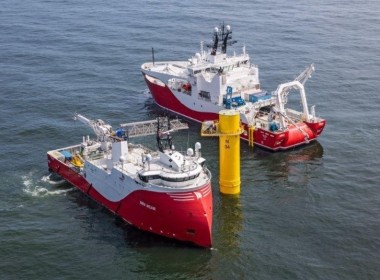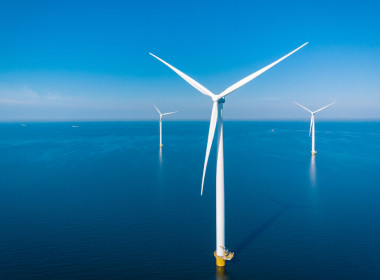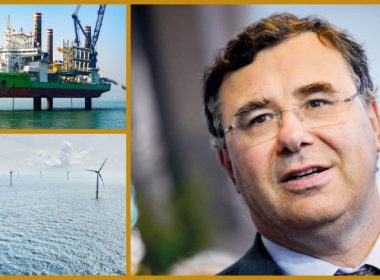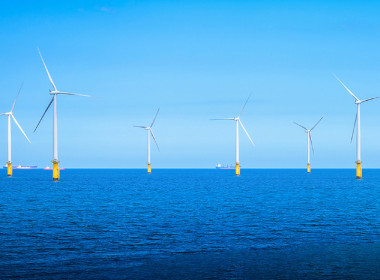COLUMN | 2024 by the numbers: Cableships; methanol; the Nigerian Navy; BP and Equinor’s wind woes; Noble in Suriname and Colombia [Offshore Accounts]
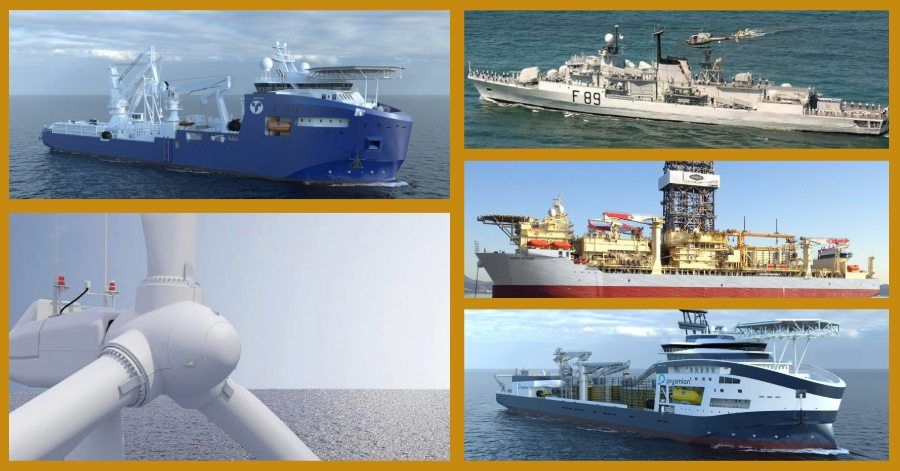
We’ve passed Twelfth Night, so let’s look at some key numbers for the year ahead.
This week’s lucky lottery numbers are 4, 10, 29, 177, and 470,000. Who is feeling lucky?
Four newbuilds for wind: #1 Toyo
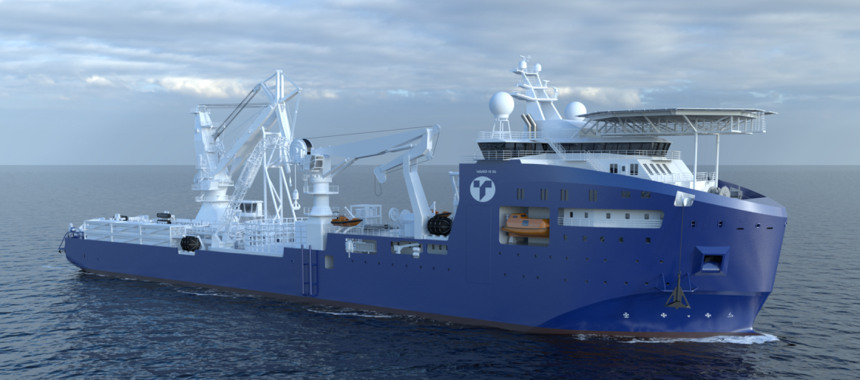
Nature abhors a vacuum, and as Global Marine Systems, for two decades the former cablelay market leader, sinks to irrelevance under its private equity ownership, a surge of investment continues in new cableships. Last year, we saw significant orders in this area, culminating in Jan De Nul’s massive Fleeming Jenkin with 28,000 tonnes of cable capacity, which was ordered in September and will be built in China.
First off the mark in December was Japan’s Toyo Construction, which ordered a US$200 million, hybrid-powered newbuilding cableship at Vard Holdings. The unit will be built to the Vard 9 15 design and will target laying both inter array cables and interconnectors in the Japanese offshore wind market. The as-yet unnamed ship will have a length of 150 metres, a beam of 28 metres, a 250-tonne active heave compensated crane, and 9,000 tonnes of cable-carrying capacity.
The builder says that the hull will be built at in Romania with outfitting to take place in Norway for delivery in mid-2026. Toyo’s vessel will be powered by five main generators and will be also fitted with two battery storage units.
#2 Prysmian
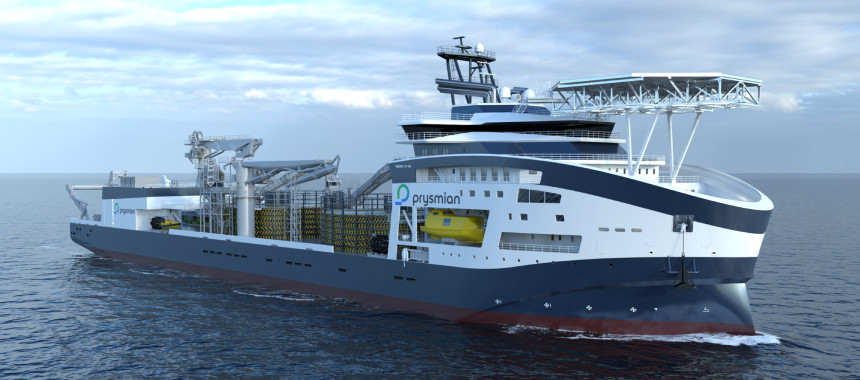
Toyo was quickly followed by an order for cable manufacturer Prysmian for an even bigger ship, costing over US$250 million. This was announced just before Christmas with delivery scheduled in 2027.
This is the third cable-laying vessel that Prysmian has contracted with Vard and is an iteration of Monna Lisa, which is still under construction, and the first vessel, Leonardo da Vinci, which was delivered in 2021.
The new DP3 vessel will have a length of approximately 185 metres and a beam of about 34 metres and will be fitted with three carousels for a total capacity of 19,000 tonnes. It really throws down the challenge to fellow cable companies NKT and Nexans to add to their own cable-laying capacity or to reach a strategic alliance with one of the Big Four in the Low Countries (Jan de Nul, Boskalis, Van Oord, and DEME).
#3 and #4 – JP Morgan??
The third and fourth recent wind vessels ordered were in Norway and are for a surprising owner, one that tells you a lot about investor interest in offshore wind.
As we reported in July last year, Bernhard Schulte Offshore ordered two commissioning service operation vessels (CSOVs) from Ulstein, and the contract included options for two plus two vessels. These options have been transferred to institutional investors advised by JP Morgan Asset Management, which promptly declared the first two options.
So, on top of the totally speculative investments in CSOVs by Pelagic Partners and Dr Hartmann, of IWS, Edda Wind, Acta and Berharde Schulte, we now have random investors shepherded together by JP Morgan. The bank has a history in shipping stretching back to at least 1902, it is true. Then JP Morgan and Co financed the formation of International Mercantile Marine Co, an Atlantic shipping company that absorbed several major American and British lines in an attempt to monopolise Transatlantic trade.
It was also the indirect owner of Titanic.
Enough said.
10 methanol bunkering ports
Last week, we got stuck into the problems facing ammonia and liquefied natural gas (LNG) as potential bunker fuels for the shipping industry as it seeks to reduce greenhouse gas emissions. We highlighted the failure of LNG as a fuel for offshore support vessels (OSVs), and the serious challenges Australian company Fortescue faces branding ammonia as a “pollution-free fuel.”
We were silent on methanol, the third liquid entrant in the future fuels debate. Two years ago, we saw how Fugro had collected a swag of Dutch government subsidies to try to run one of its survey vessels on methanol, which we expect to go live shortly, whilst Switzer was working on a methanol-powered harbour tug.
Since then, Maersk and X-press Feeders have ordered methanol-powered container vessels, as we noted in December. In November, subsidy gatherer extraordinaire Ocean Infinity announced that together with Cummins, the Aberdeen Harbour Board, and Proman, it had won over US$5 million in UK government subsidies to build a methanol conversion kit for the standard high-capacity diesel generators on one of Ocean Infinity’s Armada 78 series of survey vessels.
“Upon completion in the second quarter of 2025,” the Cummins press release states, “the project targets a reduction in CO2 emissions of 50 per cent for offshore operations of the vessel with NOx, SOx, and PM at levels considerably below those emitted by conventional fuel. Furthermore, all retrofitted dual-fuel engines will achieve compliance with IMO Tier III emission standards.”
As with ammonia, the time and cost to convert the world’s maritime fuel supply system to methanol cannot be ignored. The International Energy Agency recently produced a detailed study on the cost, production, and availability of methanol for decarbonising transport. The report bluntly states that even in 2030, “the total cost of ownership of a 100 per cent e-ammonia or e-methanol-fuelled containership would be 75 per cent higher than a conventional containership operating on fossil fuels.”
And as for the significance of the number ten? That is the number of international ports that Clarksons found offered methanol bunkering at the end of 2023. Over one hundred ports have methanol storage facilities, DNV reported, but storage and supply are not the same. Ten days ago, Maersk announced a deal with Yokohama port to make methanol bunkering available there, too.
The IEA report found that “the incremental investment for bunkering infrastructure is expected to be in the order of US$10 billion to US$30 billion.”
This future fuel revolution is not going to come cheap.
29 new Nigerian Navy rear admirals
We have previously taken issue with the treatment of foreign seafarers by the Nigerian Navy, especially during the detention of the tanker Heroic Idun last year. So, it was with surprise that we read this story in the News Agency of Nigeria. In late December, the Nigerian Navy appointed 29 new rear admirals, promoted from commodore, and appointed 28 new commodores promoted from captain. WTF?!
Then we discovered that in 2022, the navy had “redeployed” 54 rear admirals in a “major shake-up”. Further searches revealed that 76 commodores changed jobs in April 2023, as per the local newspaper Vanguard. And in June last year, another 56 rear admirals and one very lonely commodore were “reshuffled,” as per this press release (signed off by yet another commodore), which touchingly concludes, “In view of the importance of this information, you are please requested to disseminate for the general public awareness.”
Indeed. Probably Nigerian taxpayers would be interested to know how many gold-braided uniforms their funds are buying. Salaries remain dismally low, although Nigerian military officers do receive generous benefits. In 2020, Military Africa reported that the salary for a Nigerian rear admiral was NGN1 million per month (now worth around US$1,000 per month after the collapse in the naira).
One hopes that, unlike the claims made against the Nigerian Police Service, allegations which were strenuously denied, we should stress that promotions in the navy are not awarded as a result of bribery.
More admirals than ships
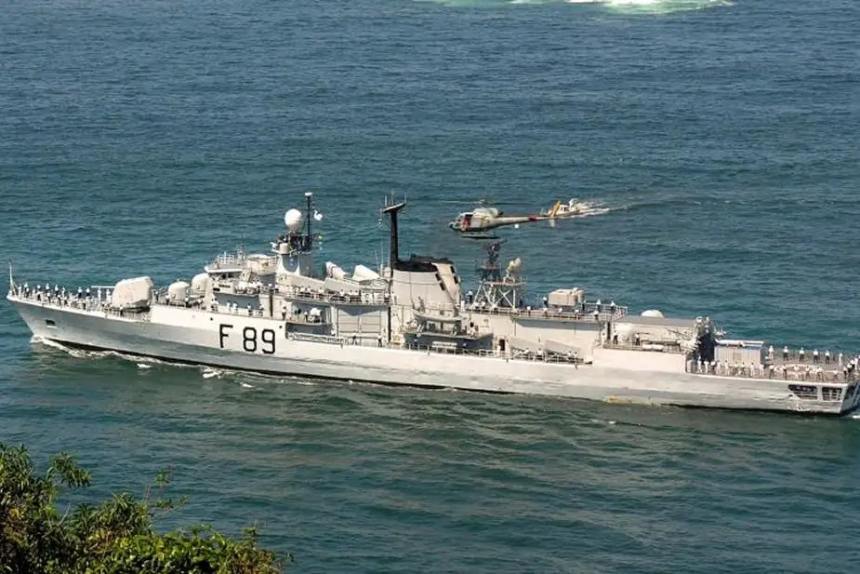
The Nigerian Navy may have 25,000 personnel (at least according to the payroll Buzz Nigeria), but it has only has 49 ships and 11 helicopters, according to its own website, and all but four of those ships are small patrol vessels, buoy tenders, and minesweepers. There are additionally 379 smaller boats as per the navy’s own definition, but the authorities themselves admit that only 269 of the boats are functional while 110 are “not-operational.” The country’s flagship is the 42-year-old frigate NNS Aradu, which is currently undergoing a refurbishment.
How many admirals and commodores does the Nigerian Navy actually have? I don’t know, but the fact that it has at least twelve times as many rear admirals as it does frigates and other large ships suggests that the service is in need of serious reform at his higher echelons.
You knew that already, but let’s see how many more admirals, commodores, and captains are appointed in 2024. For gold braid makers and crisp, white uniform fabric vendors, if not the taxpayers, the Nigerian Navy is the New Year’s gift that keeps on giving.
177 US dollars per Megawatt hour (MWh)
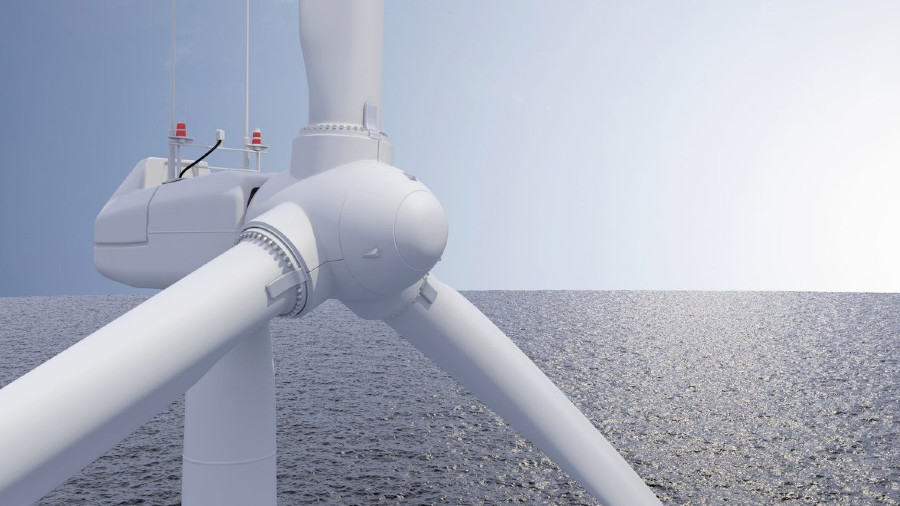
We have been saying for some time that for many new offshore wind projects to be viable, the price of electricity in many markets will needs to rise. Remember that number in the headline. That’s the new target for new US windfarm operators in the Atlantic, higher than even the price of nuclear power from the new power station being built in England, Hinckley Point C, which looks set to be priced at over US$150 per Megawatt hour (MWh) based on current British inflation.
The size of the required price increase for American offshore wind power became clearer last week when BP and Equinor announced that they had scrapped a contract to sell power from their planned offshore 1.26GW Empire Wind 2 project wind power project to the state of New York because the price was too low for them to make a return from the proposed wind farm. The power sale agreement for the 816MW Empire Wind 1 remains in place, however, as Reuters reported.
Empire Wind is being developed through a 50-50 joint venture between Equinor and BP. It is located 24 to 48 kilometres southeast of Long Island and spans 32,000 hectares in water depths of between approximately 25 and 45 metres. The lease was acquired in 2017.
It’s not fair to the majors, so kindly reset the price
The Financial Times reported that the two companies said authorities in New York had allowed them to “reset” a 2022 contract to sell power from their project “in anticipation of new offtake opportunities”.
“Commercial viability is fundamental for ambitious projects of this size and scale,” said Molly Morris, president of Equinor Renewables Americas. “The Empire Wind 2 decision provides the opportunity to reset and develop a stronger and more robust project going forward.”
The initial price BP and Equinor had negotiated for the Empire Wind 2 project was set at US$107.50 per MWh, already far higher than prevailing rates for windfarm offtakes in Europe. This was due to higher costs in America where the Jones Act has made the construction of compliant wind turbine installation vessels (WTIVs) far more expensive than in Asia, where all other units are being constructed. Only Dominion Energy’s Charybdis is under construction at a US shipyard, the Keppel Am FELS facility in Brownsville, Texas.
BP and Equinor had requested the state utilities regulator, the New York State Public Service Commission, to renegotiate the prices of their contract. They claimed that “unforeseeable economic forces” had adversely impacted the financial returns from Empire Wind 2. They had requested contract amendments that would have increased the price for electricity from the project to US$177.84 per MWh. This proposal was rejected by New York in October and the state has now opened a new solicitation for power prices, which closes on January 25.
Can vessel owners “reset” too?
Following the merger of WTIV owners Eneti and Cadeler into a New York-listed company now worth US$1.4 billion in market capitalisation, confidence in the economic viability of the nascent offshore wind industry in the United States has been falling. However, the decision to rebid the requirement shows but also illustrates the willingness of state authorities to provide flexibility to increase prices to ensure that new projects proceed.
We wonder whether vessel Owners like Havila and Remøy Shipping, locked into long-term, low-price supply vessel contracts with Equinor in Norway, will be able to claim a “reset” on their low charter rates, due to the adverse financial impact of inflation, rising costs, and the war in Ukraine, like Equinor and BP have been able to do with their windfarm project.
This will probably not happen, but throughout the history of the oil industry, the majors and the national oil companies have always been able to impose adverse terms on their subcontractors, rig and vessel owners, whilst lobbying for favourable treatment from governments and regulators for themselves.
US$470,000 for Noble in Suriname
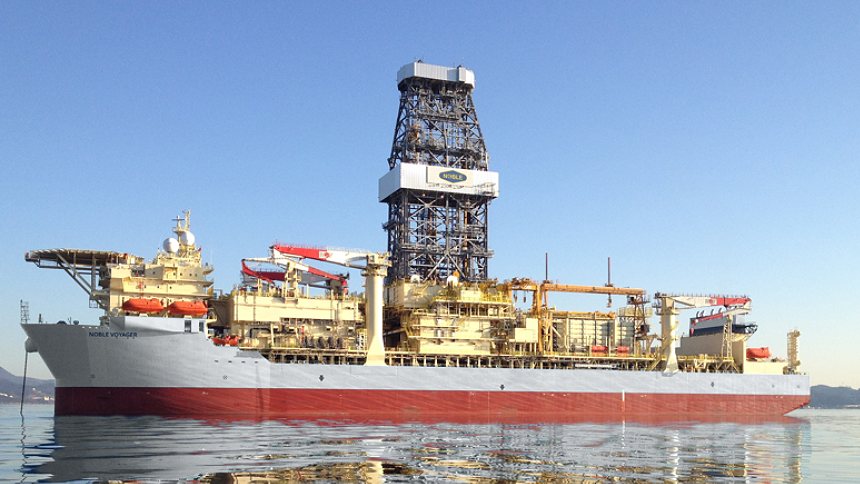
December last year saw global floating drilling rig utilisation finally reach the magic number of 90 per cent, Clarksons Research reported. This is the first time utilisation has reached that level since 2014.
Higher utilisation means higher day rates. In November, we saw Diamond Offshore Drilling fix a very short-term contract in Guinea-Bissau for its rig Ocean Black Rhino for over US$500,000 per day with PetroNor and Apus Energy (which farmed into the block at the end of the year).
Rig owner Noble’s most recent release shows how these high day rates are sticking for longer durations. Noble announced that Petronas Carigali in Suriname would be chartering the ultra-deepwater drillship Noble Voyager for one well in Block 52, taking over the contract option previously assigned to the slightly lower specification semisub Noble Discoverer.
The contract extension in Suriname will begin in February 2024, the company said, and it will have an estimated duration of 120 days at a clean day rate of US$470,000. Additionally, both parties have mutually agreed to also include a new one-well option in the contract. Noble Voyager was previously working offshore Mauritania for Shell and has moved to the Port of Spain in Trinidad to prepare for the Petronas job. This rig swap was necessary as Noble had secured additional work with Petrobras for the Noble Discoverer in Colombia.
Noble Voyager is not the only one
At the same time, the drillship Noble Valiant, which is working in the US Gulf of Mexico, will also see its day rate jump to US$470,000 this month when the rig kicks off an assignment with LLOG.
US$470,000 is quickly becoming the floor for new drillship fixtures. Heck, even Valaris managed to achieve that in a new three-year contract in Brazil with Petrobras for its drillship Valaris DS-4 as announced on January 2, but this is including extra services, however.
As utilisation hits 90 per cent, we can expect to see more deepwater rigs unstacked from cold lay-up and the final abandoned rigs in Asia leaving yards at last.
The number to watch in 2024 is how quickly Transocean manages to unstack its “magnificent seven” laid-up deepwater drillships. Those rigs are either a strategic reserve for the company or a monumental waste of resources and should have been scrapped years ago.
This year will finally see if they can return to work again, or not.
Corrupt Person of the Year 2023
Finally, regular readers know by now that our favourite anti-corruption website is the Organised Crime and Corruption Reporting Project (OCCRP). OCCRP recently named its 2023 person of the year in organised crime and corruption: the winner was Guatemala’s Attorney General, María Consuelo Porras. She joins an august list of previous winners, including the current crooked presidents of Azerbaijan, Belarus, Russia, and Venezuela.
“Porras is protecting what has been called in Guatemala ‘the pact of the corrupt,’ which involves bent businessmen, corrupt politicians, members of organised crime, and retired generals,” said Maria Teresa Ronderos, one of OCCRP’s Person of the Year judges. “She has brutally persecuted honest prosecutors, journalists, and activists, chasing them into exile and depriving the public of these crucial checks on authority.”
For once, it is nice to see the ruler of a corrupt oil and gas producer not winning an award. Oh wait. Did you say Saudi Arabia just won the right to host the 2034 FIFA World Cup?
Background reading
The history of the Nigerian Navy can be found here and here.
More information on Empire Wind is available on the project website.
Michael Barnard in Forbes reviewed the progress with Methanol a few days ago and concluded “2023 was the year for methanol in shipping but that likely won’t last.”


